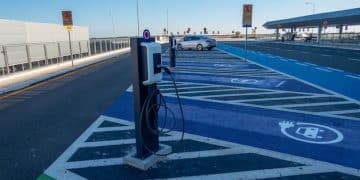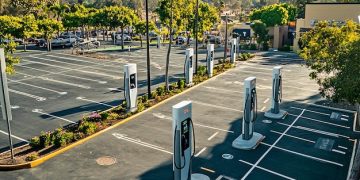Using Data Analytics to Solve Transportation Inequity in US Cities

Data analytics can help US cities identify and address transportation inequities in underserved communities by revealing patterns in access, usage, and infrastructure, enabling targeted improvements and policy adjustments.
How Can US Cities Leverage Data Analytics to Identify and Address Transportation Inequities in Underserved Communities? Data analytics offers powerful tools to understand and rectify disparities in transportation access and quality. This article explores strategies for US cities to use data to create more equitable transportation systems, focusing on underserved communities.
Understanding Transportation Inequities Through Data
Transportation inequities are often invisible without the right tools. Data analytics provides a lens through which these disparities can be examined, understood, and ultimately addressed.
By analyzing various datasets, cities can uncover significant gaps in transportation services and accessibility.
Identifying Key Indicators of Inequity
Data can reveal which communities lack adequate access to public transportation, experience longer commute times, or face higher transportation costs.
- Access to Jobs: Analyzing commute patterns to employment centers.
- Healthcare Access: Mapping transportation routes to hospitals and clinics.
- Grocery Access: Determining ease of travel to grocery stores, especially in food deserts.
Leveraging Demographic Data
Combining transportation data with demographic information provides a comprehensive understanding of how inequities affect specific populations.

This includes understanding the needs of low-income residents, minority communities, and individuals with disabilities.
Ultimately, data-driven insights are essential for crafting effective and equitable transportation policies.
Collecting Relevant Transportation Data
Effective data analytics relies on the availability of comprehensive and relevant data. Cities must prioritize the collection and integration of various data sources to gain a holistic view of transportation patterns.
This involves gathering data from diverse sources and ensuring its quality and accessibility.
Public Transportation Data
Real-time transit data, ridership statistics, and route information are crucial for understanding public transportation usage.
- Real-time GPS tracking: Provides up-to-date information on bus and train locations.
- Smart card data: Tracks ridership patterns and popular routes.
- Customer feedback: Gathers insights on service quality and areas for improvement.
Traffic and Infrastructure Data
Information on traffic patterns, road conditions, and infrastructure investments helps identify areas with transportation bottlenecks and safety concerns.
This data can inform decisions about infrastructure improvements and traffic management strategies.
Community Input and Surveys
Engaging with underserved communities through surveys and public forums provides valuable qualitative data on their transportation needs and challenges.

This approach ensures that the voices of those most affected are heard and considered in the decision-making process.
By combining quantitative and qualitative data, cities can develop transportation solutions that are both effective and responsive to community needs.
Applying Data Analytics Techniques
Once the necessary data is collected, cities can apply various analytical techniques to identify patterns, trends, and inequities in transportation systems.
These techniques range from basic statistical analysis to advanced machine learning algorithms.
Geographic Information Systems (GIS) Analysis
GIS allows cities to visualize and analyze spatial data related to transportation infrastructure, demographics, and accessibility.
This helps identify areas with poor transportation connectivity and potential disparities.
Predictive Modeling
Predictive models can forecast future transportation demands and identify potential bottlenecks or service gaps based on historical data.
- Demand forecasting: Predict future ridership patterns and adjust service accordingly.
- Route optimization: Identify the most efficient routes based on traffic patterns and demand.
- Infrastructure planning: Plan future infrastructure investments based on projected needs.
Machine Learning Algorithms
Machine learning can uncover complex patterns and relationships in transportation data that may not be apparent through traditional analysis.
This includes identifying factors that contribute to transportation inequities and predicting the impact of potential interventions.
Case Studies: Cities Successfully Addressing Inequities
Several US cities have successfully used data analytics to address transportation inequities and improve mobility for underserved communities. These examples provide valuable insights and best practices.
Examining these case studies can inspire other cities to adopt similar approaches.
Seattle, Washington
Seattle has used data to identify areas with limited access to public transportation and has invested in new bus routes and expanded service in those areas.
Seattle’s efforts have reduced commute times and improved access to jobs and essential services for residents in underserved neighborhoods.
Boston, Massachusetts
Boston has used data to analyze traffic patterns and identify areas with high pedestrian and cyclist accident rates. The city has implemented targeted safety improvements, such as installing new crosswalks and bike lanes.
- Vision Zero Initiative: Aims to eliminate traffic fatalities and serious injuries.
- Data-driven planning: Uses data to prioritize safety improvements in high-risk areas.
- Community engagement: Involves residents in the planning and implementation of safety measures.
Minneapolis, Minnesota
Minneapolis has used data to understand the transportation challenges faced by low-income residents and has implemented affordable transportation options, such as subsidized transit passes.
These initiatives have improved access to jobs and education for low-income residents.
These case studies demonstrate the potential of data analytics to drive meaningful improvements in transportation equity.
Challenges and Considerations
While data analytics offers powerful tools for addressing transportation inequities, cities must be aware of potential challenges and considerations.
Addressing these challenges is crucial for ensuring that data-driven strategies are effective and equitable.
Data Privacy and Security
Protecting the privacy and security of transportation data is essential. Cities must implement robust data governance policies and protocols to prevent misuse and ensure compliance with privacy regulations.
Transparency and accountability are also important for building public trust.
Data Bias
Data used for analysis may reflect existing biases, leading to skewed results and potentially reinforcing inequities. Cities must carefully evaluate data sources and mitigate potential biases.
- Algorithm Audits: Regularly audit algorithms to ensure they are not perpetuating bias.
- Diverse Data Sets: Use diverse data sets to ensure a representative sample.
- Transparency: Be transparent about the data used and how it is analyzed.
Community Engagement
Engaging with underserved communities throughout the data analysis and decision-making process is crucial for ensuring that transportation solutions are responsive to their needs and preferences.
Community input can help identify unmet transportation needs and potential unintended consequences of proposed solutions.
By addressing these challenges, cities can maximize the potential of data analytics to promote transportation equity.
Future Trends in Data-Driven Transportation Equity
The field of data-driven transportation equity is constantly evolving, with new technologies and approaches emerging. Staying abreast of these trends is essential for cities looking to leverage data to create more equitable transportation systems.
These future trends offer exciting opportunities for innovation and improvement.
Artificial Intelligence (AI) and Machine Learning
AI and machine learning are becoming increasingly sophisticated and can be used to analyze complex transportation data and identify patterns that would be difficult for humans to detect.
This includes using AI to optimize public transportation routes, predict traffic congestion, and personalize transportation options for individual users.
Internet of Things (IoT)
The IoT is generating vast amounts of data from sensors embedded in transportation infrastructure, vehicles, and mobile devices. This data can be used to monitor traffic conditions, track the movement of people and goods, and identify potential safety hazards.
Cities can leverage IoT data to improve traffic management, enhance public safety, and create more efficient transportation systems.
Blockchain Technology
Blockchain technology can be used to create secure and transparent transportation data platforms. This can help cities share data with stakeholders, track the flow of funds, and ensure accountability in transportation projects.
Blockchain can also be used to create decentralized transportation services, such as ride-sharing and micro-mobility platforms.
By embracing these future trends, cities can continue to innovate and improve their transportation systems, ensuring that they are equitable and accessible to all residents.
| Key Point | Brief Description |
|---|---|
| 📊 Identifying Inequities | Data helps reveal gaps in transportation access and services. |
| 🚦 Collecting Data | Gathering data from public transit, traffic, and community feedback. |
| 👨💻 Analytical Techniques | Using GIS, predictive modeling, and machine learning for insights. |
| 🏙️ Case Studies | Examples of cities like Seattle, Boston, and Minneapolis successfully addressing inequities. |
Frequently Asked Questions
▼
Data analytics can optimize routes, identify unmet needs, and improve service frequency, making public transportation more accessible and efficient for underserved communities.
▼
Demographic data, transit ridership, commute times, and accessibility metrics are crucial for understanding disparities in transportation access and quality.
▼
Implementing robust data governance policies, anonymizing data, and complying with privacy regulations are key steps to protect data privacy and security.
▼
Data bias, privacy concerns, and the need for community engagement are common challenges that cities must address to ensure effective and equitable solutions.
▼
Surveys, public forums, and ongoing dialogue with community members can provide valuable qualitative data that complements quantitative analysis, ensuring solutions meet community needs.
Conclusion
Leveraging data analytics is essential for US cities to identify and address transportation inequities in underserved communities. By collecting relevant data, applying appropriate analytical techniques, and considering potential challenges, cities can create more equitable, efficient, and accessible transportation systems for all residents.





